Banking on
Stem Cells
in Teeth
1) What are Stem Cells?
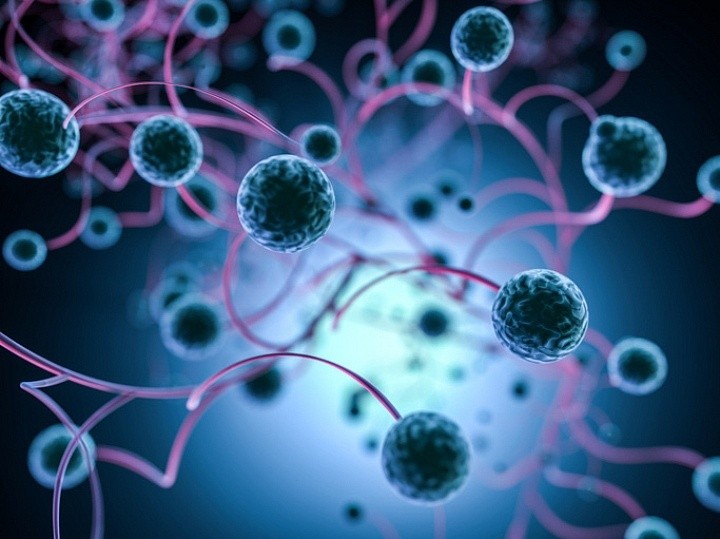
Most people would like to know more about Stem Cells in general, so we put together some of the key points for you here. If you're already a Pro, please proceed to Section 3.
Stem cells are defined as precursor or progenitor cells that have the potential to differentiate (mature) into a wide variety of tissue. Dental pulp was recently found to contain adult stem cells, (minimizing any political or ethical issues as seen with embryonic stem cells), and through some dedicated research, are showing amazing potential for tissue engineering applications and treating several degenerative conditions.
In many tissues, stem cells serve as a type of internal repair system, dividing and maturing to replenish tissues that have been damaged or destroyed by injuries or illnesses.
The role of stem cells play in human biology:
Stem cells have the amazing potential to develop into many different cell types in the body during early life and growth. In addition, in many tissues they serve as a sort of internal repair system, dividing essentially without limit to replenish other cells. When a stem cell divides, each new cell has the potential either to remain a stem cell or become another type of cell with a more specialized function, such as a muscle cell, a red blood cell, or a brain cell.
Stem cells can be divided into two generic groups:
- Embryonic stem cells
- Somatic or "adult" stem cells
Although often categorized as either embryonic or adult, they actually represent a continuum of cell types that eventually transform into our "end-product" tissue.
2) Stem Cell Potency
Stem cells are classified by their ability to differentiate into different cell types.
Stem cell classifications are:
Totipotent - the ability of the cell to differentiate into all cell types. Examples include the first few cells after the division of the zygote.
Pluripotent - the ability of the cell to differentiate into almost all cell types. Examples include embryonic stem cells.
Multipotent - the ability of the cell to differentiate into a closely related family of cells. Examples include Hematopoietic and Mesenchymal.
Oligopotent - the ability of the cell to differentiate into a few cells. Examples include myleoid stem cells.
Unipotent - the ability of the cell to differentiate into only one cell type. Examples are muscle stem cells.
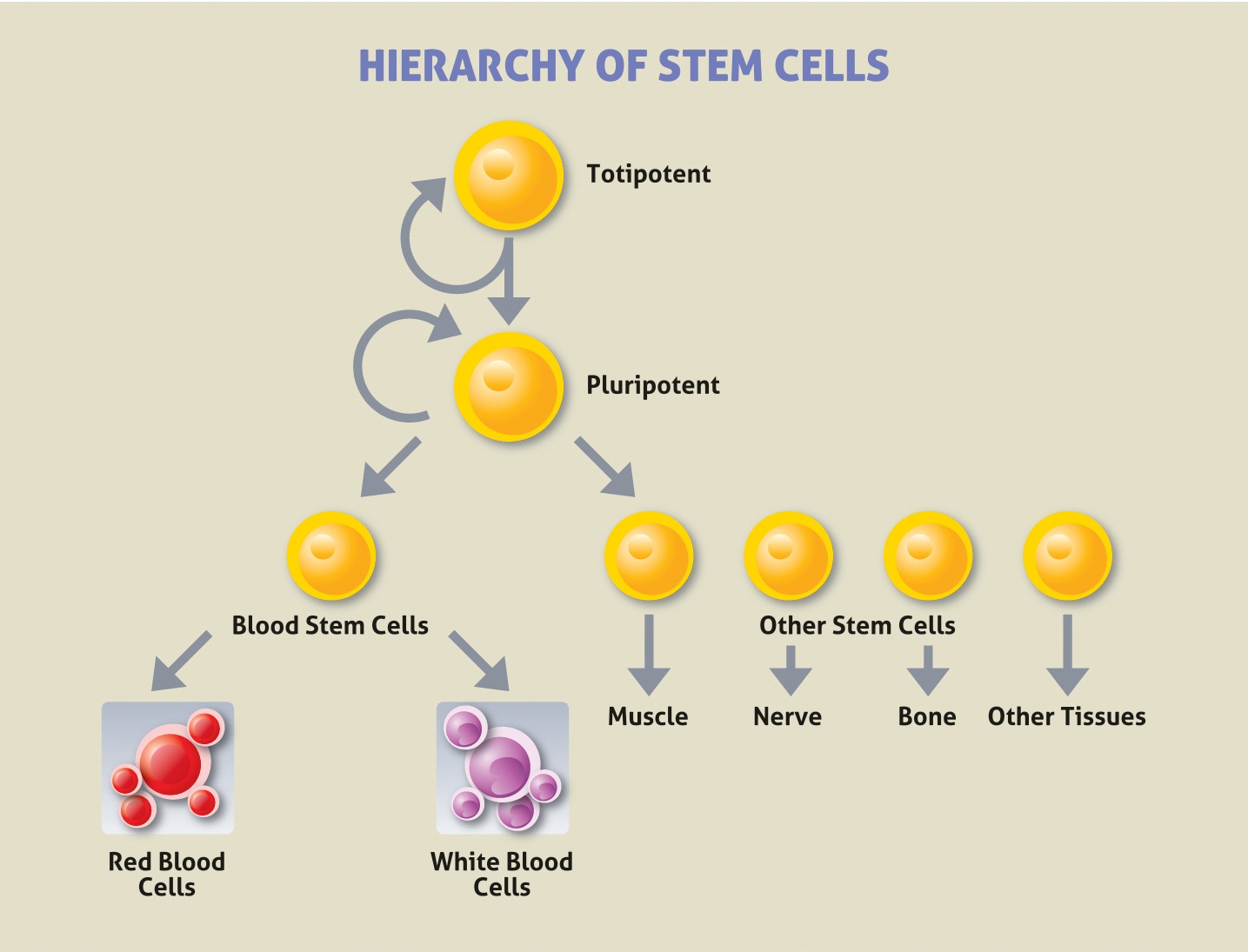
3) Why Store My Child's Stem Cells?
Your child’s teeth are a valuable source of stem cells. And the stem cells harvested from our children’s teeth are capable of amazing things. These ‘master cells’ are the basis for creating (and repairing) our entire body from head to toe.
The cells harvested from baby teeth are at their optimum because they are young, vibrant, healthy, and full of functionality. By storing your child’s best stem cells now, they can access can them in the future to take advantage of numerous age-related therapies in development.
Plus: Your own stem cells are the best stem cells. They’re unique to you and highly valuable because at some point soon people will be using their own stem cells as the natural way to combat many health conditions — even aging itself.
4) Why Are Dental Stem Cells So Special?

Baby teeth contain MSCs, the most versatile type of Stem Cell.
Dental pulp is a rich source of stem cells — this soft living tissue contains mesenchymal stem cells (MSCs) that can differentiate into a broad range of different cell types, giving them a wider range of potential applications than most other cell types.
The ideal time to harvest MSCs from dental pulp is when our children lose their baby (deciduous) teeth. This can happen through natural loss or extraction making it the only non-invasive method of collecting stem cells.
Plus, stem cells harvested from the dental pulp within teeth have many advantages over other types of stem cells. They are not limited to the amount collected from the tooth because they can be expanded within a laboratory or medical facility.
What Is Dental Pulp?
A small mass of connective tissue, blood vessels, nerves, and stem cells located in a chamber within the dentin layer of a tooth (the pulp chamber is found in the crown and the root of the tooth).
Why is Dental Pulp So Promising?
The stem cells found in dental pulp are a non-controversial adult stem cell known as a mesenchymal stem cell. Mesenchymal stem cells can differentiate or "mature into" many different cell types including; osteoblasts (bone cells), chondrocytes (cells that make up cartilage), myocytes (muscle cells), adipocytes (fat cells), neurons and recently described beta cells (cells found in the pancreas that synthesize insulin).
This multipotent potential makes these cells an excellent candidate for "regenerative medicine" and tissue engineering applications.
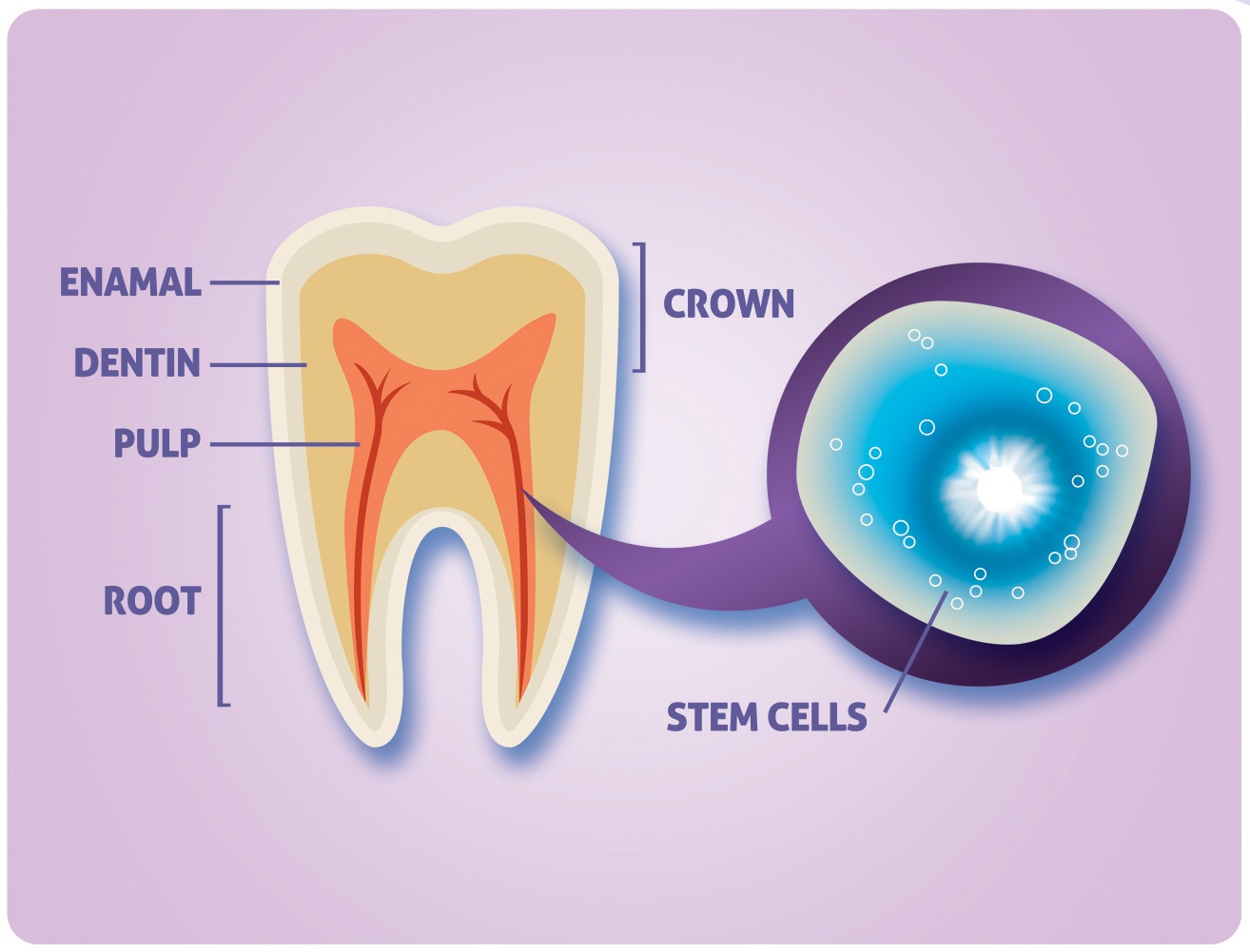
A Potential Life-Saving or Life-Improving Decision For The Future
With all the emerging potential in tissue engineering applications using mesenchymal stem cells, a child's loose baby tooth can provide first-rate mesenchymal stem cells that can be used in the future for cellular-therapy based applications. Mesenchymal stem cells have shown amazing promise in the potential treatment of Parkinson's and Alzheimer's disease, Type I diabetes, heart attack, stroke, Multiple Sclerosis, ALS, spinal injury and several others.
In the past, lost or extracted teeth have been viewed as medical waste and discarded, resulting in the loss of this potential life-saving resource. Now you can save these cells through OOTHY's Dental Pulp Stem Cell Banking Program, so that you may have access to them in the future.
Tapping Into The Potential Of Dental Pulp Stem Cells
- Researchers at the National Institute of Health (NIH) discovered stem cells in the pulp chamber of teeth back in 2000.
- Since then, researchers have studied these cells in an attempt to characterize this unique cell population and determine if there are any clinical applications for these cells.
- Over the course of ten years, researchers have shown that the cells found in dental pulp are a type of adult stem cells referred to as mesenchymal stem cells also known as MSCs.
- Mesenchymal stem cells have the ability to mature into:
- Bone
- Muscle
- Nerve
- Fat
- Cartilage
5) Benefits of Banking Dental Pulp Stem Cells
Imagine a world where we can create living, functional tissue in an effort to repair or replace tissue or organ function lost due to age, disease, damage, or genetic defects. Dental pulp stem cells hold the potential of possibly regenerating damaged tissues and organs in the body by stimulating organs to heal themselves.
The technology within dental pulp stem cells allow scientists to grow tissues and organs in the laboratory and safely implant them when the body cannot heal itself. This is no longer science fiction; it is becoming a reality and dental pulp stem cells may prove to be an important factor in this reality.

The 'Happy Dance' is optional!
Tapping Into The Potential Of Dental Pulp Stem Cells
- 1 in 7 people in North America prior to age 70 will require treatment for cardiac repair (i.e., Myocardial Infarction or Congestive Heart Failure) (Nietfeld & Verter, 2004).
- 25.8 million people in the U.S. alone have diabetes with this number increasing by 1.9 million annually (American Diabetes Association).
- 1 million people in the U.S. suffer from Parkinson's disease with this number increasing by 50,000 annually (Parkinson's disease Foundation).
- 350,000 people in the U.S. suffer from Multiple Sclerosis with this number increasing by 10,400 annually.
In the near future, stem cells from dental pulp may provide an effective treatment option for these debilitating disorders. But that's not all. It seems that use of stem cells will used to optimize wellness and prevent the onset of major health issues altogether.
The stem cells from dental pulp may be one of the most promising cell-therapies in the future. Those who preserve dental pulp stem cells do so, to feel at ease, knowing that those cells may have future uses that are extremely valuable.
6) How Can Stem Cells Be Used?
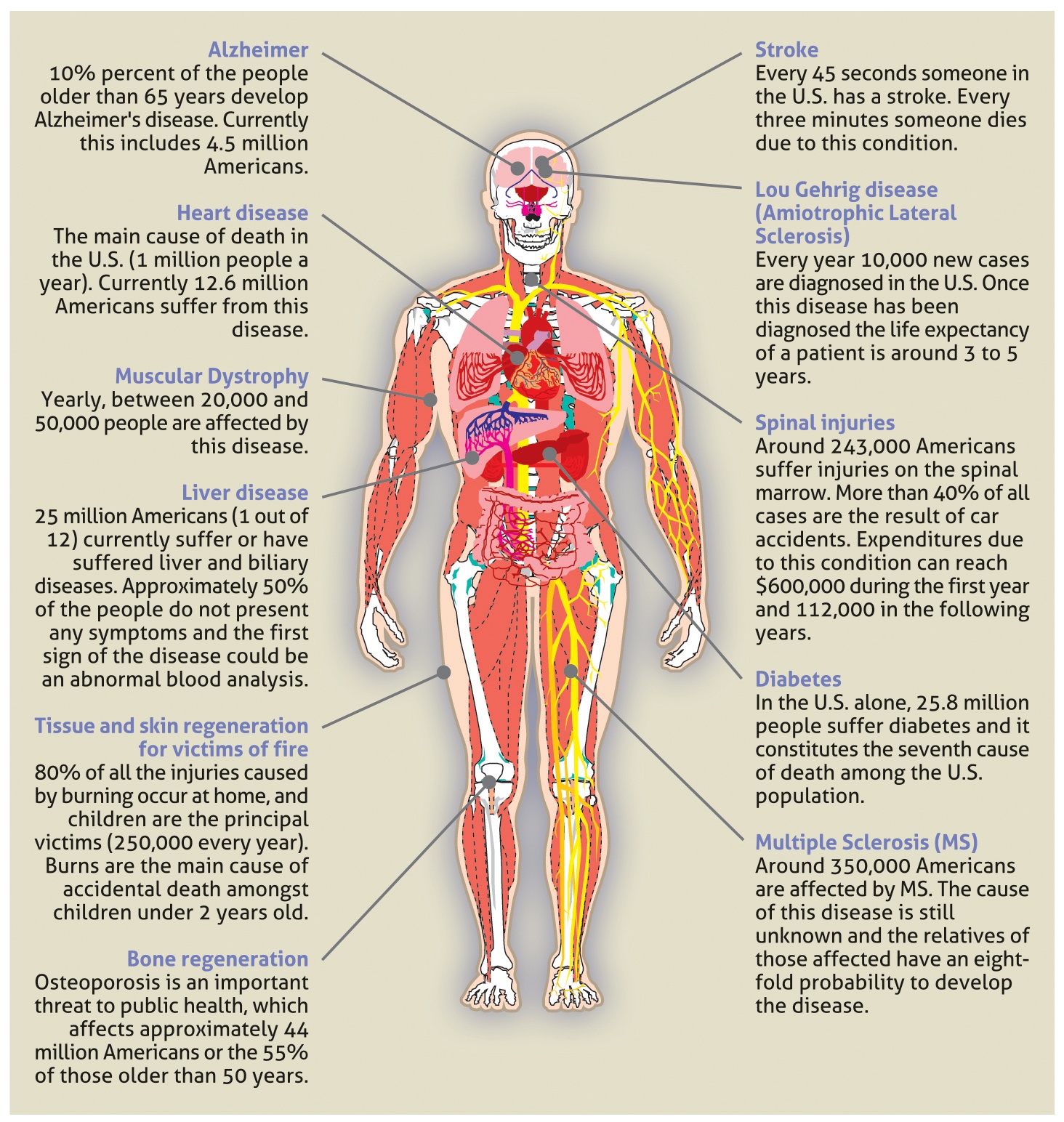
The mesenchymal stem cells (MSCs) found in teeth are the most widely researched stem cell with the amazing ability to transform into nearly any of the 200 cell types in our bodies.
With over 320,000 scientific publications worldwide, exciting stem cell breakthroughs are happening every day. Time will tell how these cells will be used in regenerative applications because MSCs from Teeth, Bone Marrow, Blood and other sources are being explored in more than 4,600 clinical trials worldwide.
Plus, researchers are learning more every day about using the MSCs stem cells found in teeth for treating a variety of health and age-related conditions like:
- Heart attack
- Stroke
- Parkinsons
- Alzheimers
- Brain damage
- Cancer
- Diabetes
- Autism
- Muscular Dystrophy
- Multiple Sclerosis
- Cerebral Palsy
- Leukemia
- Lymphoma
- Neurological disorders
- Kidney disorders
- Liver disorders
- Wound healing
- Regenerative Dentistry
- Bone and gum disorders
- Alcoholism
- Drug addictions
- Orthopedic, anti-aging and wellness
In addition, there are several ongoing studies to determine other potential clinical applications of these cells. The research related to stem cells could eventually lead to therapy that could be used in treating diseases that affects nearly 128 millions of Americans.
It's Not All About Treating Conditions
The most amazing work with stem cells right now is utilizing them for preventative medicine and to improve overall health, wellness and quality of life. It's no longer about treating conditions, it's about preventing terrible diseases and conditions altogether. For those that store their own cells, these new Cellular Therapies and Regenerative Medicine advancements can pave the way to a future of Health Independence.
Cellular Therapies
The concept behind cellular therapies is to use one's own stem cells to re-populate specific cells that may be defective or dead.
There are several disorders that require the transplant of new cells to replace dead or damaged cells.
The requirements to treat these disorders are genetically matched stem cells. That is why it is beneficial to bank one's own stem cells, since they are an exact genetic match for the individual.
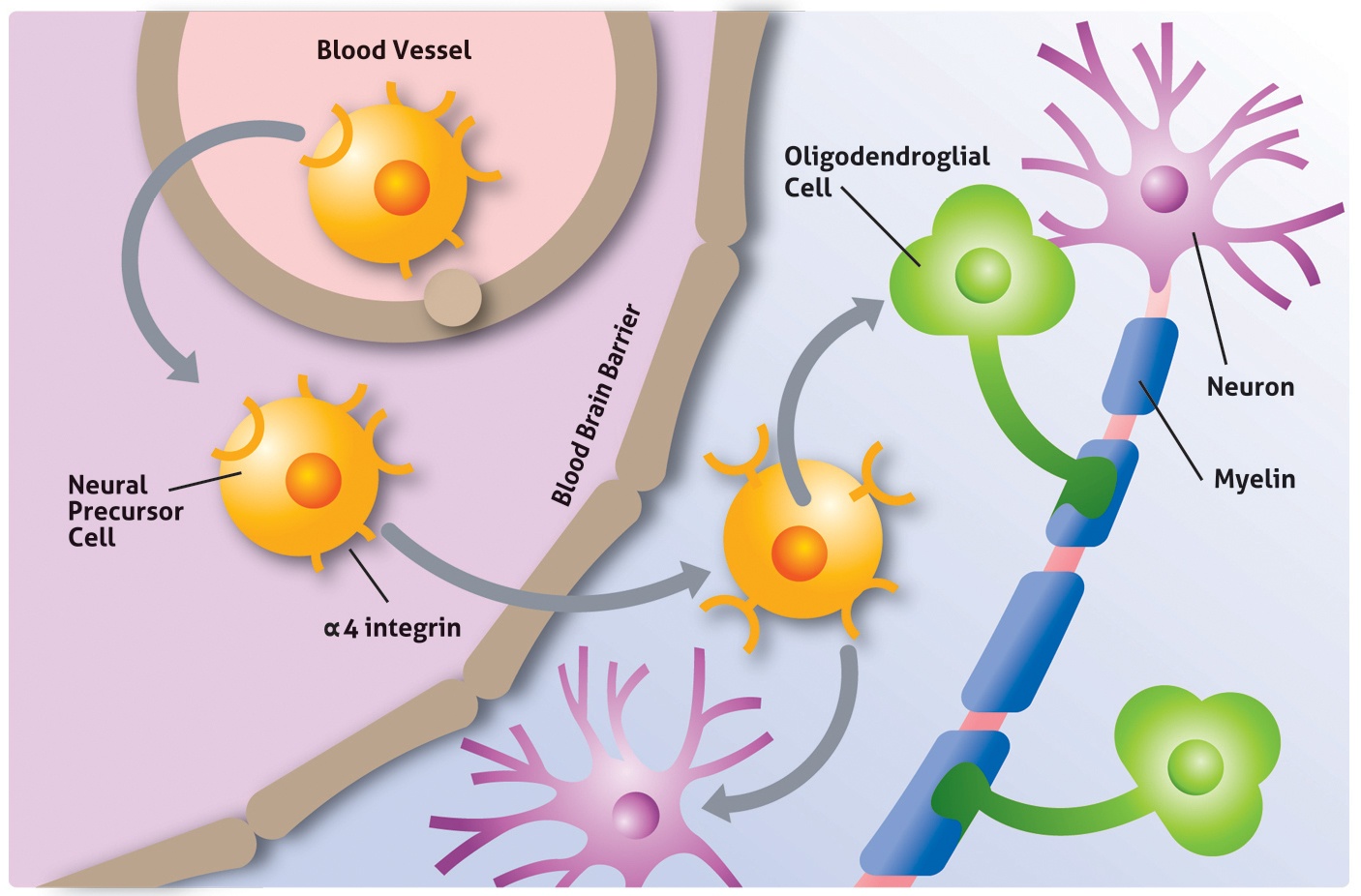
The amazing thing about most stem cells is their ability to hone in on the site of damage. Most stem cells can be administered systemically (intravenous) and they will migrate to the site of injury. Once there, the stem cells will receive chemical "communications" from the cells of the damaged tissue which will cause the stem cells to differentiate into the cells of the damaged tissue to repair said tissue.
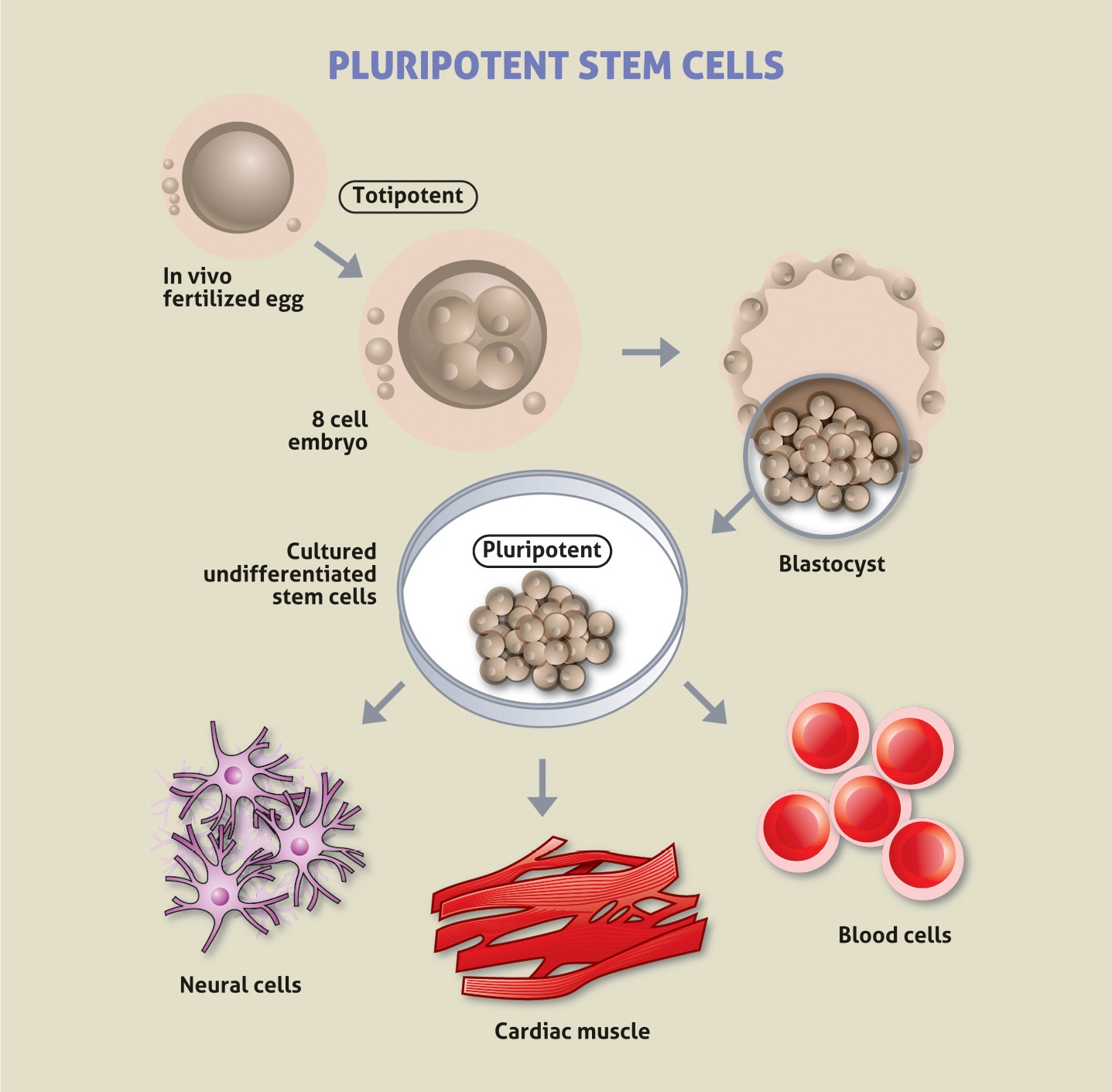
Regenerative Medicine
Regenerative Medicine is an emerging field involving stem cell therapy.
Regenerative Medicine employs methods to restore the function of damaged tissue and organs. The four main aspects in regenerative medicine are:
- Medical devices and artificial organs
- Tissue engineering and biomaterials
- Cellular therapies
- Using the cells in clinical settings
7) Banking With OOTHY
Since scientists have shown tremendous potential for dental pulp stem cells in clinical applications, OOTHY has developed procedures for the safe extraction, processing and cryopreservation of these cells, for you, to be used in potential future clinical applications. A process we call Stem Cell Banking 2.0
What to Expect
Once you enroll in the Dental Pulp Banking Program, you will receive a Collection Kit with the instructions.
The tooth can be collected at home or at your dental provider. But it is important not to wait for the tooth/teeth to fall out. If the tooth falls out, there hasn't been a blood supply to the tissue and therefore, the tissue and stem cells may have a decrease in viability.
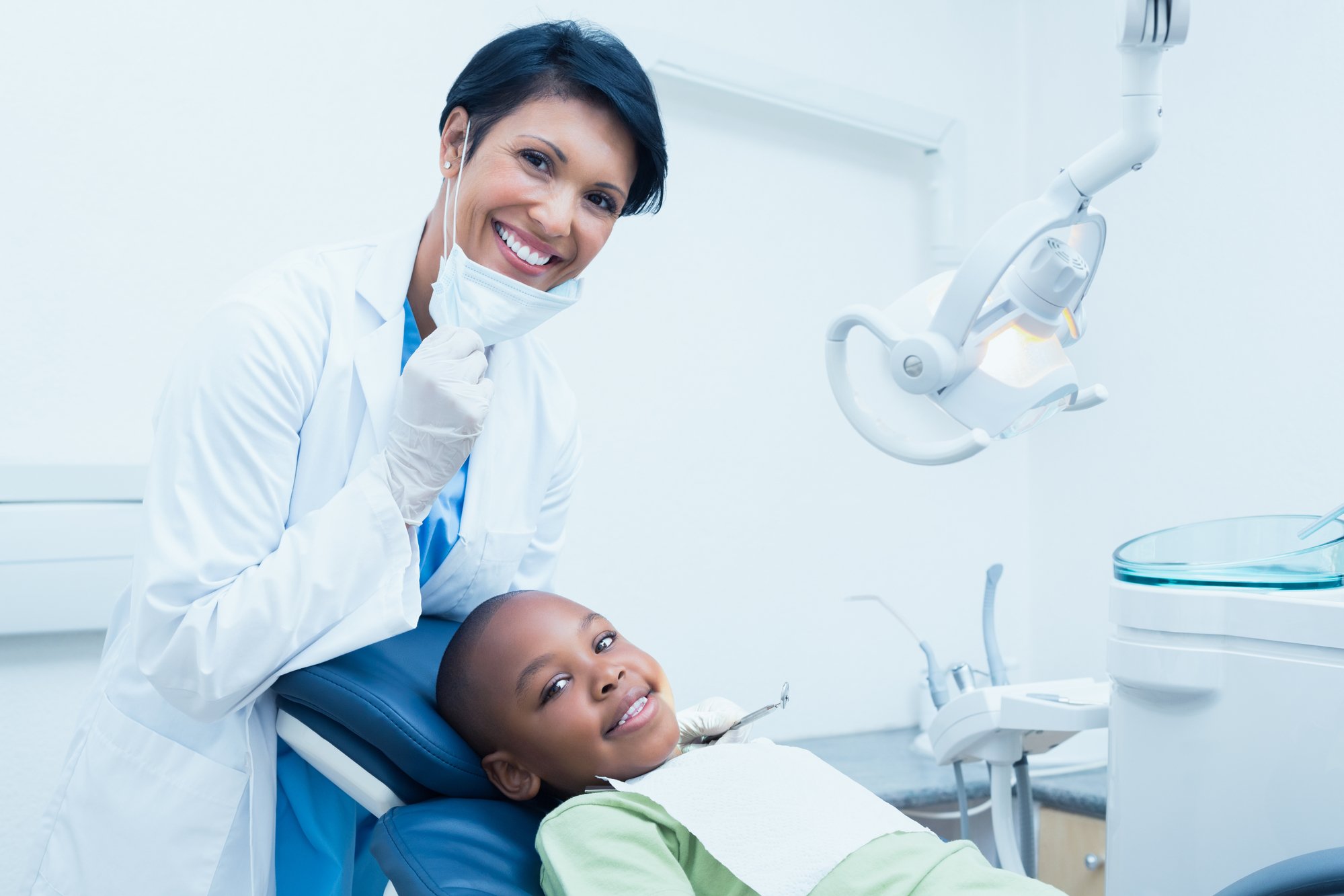
The tooth should still have a blood supply, meaning the tooth should bleed when removed. If the tooth has been dangling for days, it is most likely not a candidate for viable stem cells. In general, for the stem cells to be viable, the tooth must have at least a third of the root intact.
Once removed, the tooth must immediately be placed in the OOTHY collection bottle to maintain tissue viability and shipped overnight to our laboratory using the prepaid FedEx label and envelope provided with your collection kit.
If the tooth is being extracted by a dentist, simply bring the kit with you and they will follow the directions included in the collection kit. If there are any questions, your dentist's staff can call us at (844) MY-OOTHY. Our phone number is also on the collection bottle.
The Collection Process
When a client is enrolled in the service, the client receives a Dental Pulp Collection Kit with the required elements for the collection of the tooth/teeth. The Kit must be stored in a safe place, at room temperature, until the dental appointment. The dentist will be provided instructions in the kit for the procurement of the tooth/teeth.
Once the procurement is complete, the tooth/teeth are sent to our laboratory for processing and cryogenic storage.
The sample must remain at room temperature and must not be refrigerated. Once received at our laboratory, the processing and cryopreservation process begins.

OOTHY! I sent you my tooth.
After the Tooth is Removed
Once the dentist has extracted the tooth/teeth, he will place it into the collection bottle provided in the Kit.
The collection bottle contains a solution that will help maintain the tissue viability until the tooth/teeth arrive at our Processing and Cryopreservation Laboratory.
Once the Dental Pulp Kit arrives at our Laboratory
Once the collection kit arrives at our laboratory, the stem cell technicians will review all the paperwork, assign a unique identification number, and place all of your information into our secure database.
The technician will then take the bottle to our sterile processing area and examine the tooth.
Once the tooth passes our initial examination and has been deemed acceptable for processing, the technician will begin the stem cell extraction procedure.
Stem Cell Processing and Cryopreservation 2.0
- The dental pulp tissue is extracted from the tooth using stringent procedures developed by our internal team of scientists. This proprietary process ensures cellular viability and adherence to all applicable FDA regulations.
- Once the processing procedure and testing have been completed, a cryoprotectant will be added in order to ensure maximal cellular viability while the cells are under cryogenic conditions (approximately -321 °F / -196 °C).
- The cells are frozen using a stage freezing procedure developed by OOTHY's scientists. This procedure is critical to minimize cellular stress that can be caused by the freezing process.
- Once the freezing stage has been completed, the cells are placed into our long-term cryogenic storage freezers.
8) About Us
Our Laboratory
OOTHY is committed to excellence in cell processing and cryogenically storing your dental pulp stem cells. Using state-of-the-art equipment and highly qualified, laboratory personnel, we ensure the highest quality standard is upheld thus providing the best possible service for our clients.
Our highly qualified laboratory director, who has overseen tens of thousands of processed stem cell units, supervises our laboratory. The laboratory technicians are highly experienced in processing and storing stem cell samples.
Our clients can rest assure that their child's processed dental pulp stem cells will be stored under proper temperatures at all times. Our cryogenic storage devices are video and alarm monitored and backed up by our reliable generators and back up nitrogen tanks in the facility.
Our Processing
Your tooth/teeth should be shipped to our facility immediately after the collection has taken place. All the necessary materials (all the paperwork, medical history and tooth/teeth) needed for the processing of your tooth/teeth will arrive at our laboratory under strict quality-controlled conditions in order to safeguard the dental pulp stem cells.
We process our clients' dental stem cells using a highly validated, proprietary processing procedure developed by our scientists at OOTHY and approved by the FDA.
Our Cryogenic Storage
An important aspect in maintaining viability of the Dental Pulp Tissue throughout the processing and cryopreservation is controlling the rate of freezing and the subsequent sustained cryogenic temperature of the cells once they are in cryogenic storage.
Our laboratory uses a staged freezing process that ensures the tissue's future viability. Once the tissue is brought to the optimum temperature, it is placed in a continuously monitored cryogenic freezer until it is requested for medical use.
Our Laboratory Leadership Team

TODD R. FLOWER PhD
Medical Director
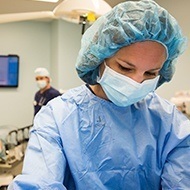
PRISCILLA PAGES
Laboratory & Research Director
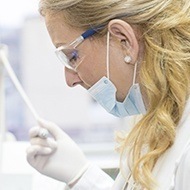
DALIA SANCHEZ
Laboratory Supervisor
9) The Investment
We believe in the power of Stem Cells and the amazing opportunity to protect our kids healthy future because:
- Young stem cells are the best stem cells.
- Stem cells can be stored indefinitely.
- The cells from ONE tooth can be expanded and used for a lifetime.
When you join us, we immediately send out the OOTHY Collection Kit and everything you and your dental provider need to collect a tooth and send it back to our lab for processing. The investment includes the collection kit, tissue processing, confirming validity and sterility for future use, and 20 years of cryogenic storage.

COLLECTION KIT
Free
Collection Kit ($150 Value) is Free.
BONUS: When you join OOTHY you also get member access to the latest stem cell news, health breakthroughs, and therapies. Plus: One-on-one access to our patient counselors and medical laboratory team.
QUESTIONS? We love to answer them, click the link to Schedule a 15-Minute Discovery Call with a Stem Cell Specialist to learn more. We also compiled a list of FAQs below.
10) FAQs
Why choose OOTHY?
With more than 16 years of experience, we use state-of-the-art equipment and highly qualified personnel for processing and storing stem cells. We ensure the highest quality standards are upheld, thus providing the best possible service for our clients. Our highly qualified laboratory director has overseen tens of thousands of processed cord blood, adipose and dental pulp units, and has also supervised the release of a large number of units for transplant procedures. Our laboratory technicians are highly experienced in processing and storing stem cell tissue samples.
What storage plans do you offer and what are the costs?
Based on parents feedback, we offer a 20-year stem cell collection/ storage plan that allows all parents to get started for free without upfront fees or setup fees.
We don't offer shorter-term plans. Why is this?
Parents of OOTHY realize the investment in tooth banking is a long-term one. And unlike banking stem cells from cord blood, the mesenchymal stem cells in teeth can be expanded and used for a lifetime. Therefore, purchasing a short-term plan would be more expensive and defeat the purpose of investing in the first place.
We're proud of our internationally recognized stem cell collection process, and offer a flexible and long-term storage plan to invest in the future uses of stem cells.
Our plans allow parents to have their child's stem cells on hand as an insurance policy, and their own biological pharmacy "on demand" for regenerative and longevity benefits.
To learn more schedule a call with us.
If I banked my child's cord blood, should I also bank their dental stem cells?
Stem cells from cord blood are used in the treatment of childhood diseases such as leukemia, sickle cell anemia, and lymphoma, to help replenish the patient’s blood supply with healthy new cells. Dental Stem Cells may have the potential to be transformed into other cells including cardiac, muscle, bone, cartilage, nerve, and fat tissue.
How many teeth should I bank?
The good news is, it is possible to use the tissue from one tooth more than once. Of course, this will depend on the original sample size and the intended medical use. Storing multiple teeth is not a bad idea because of the uncertainty of how many cells will be needed in the future, and the multiple regenerative uses that will be available.
You can send up to four of your child's teeth at the same time at no additional cost. This is typically the case with Wisdom teeth extractions. Otherwise, the majority of people send one tooth at a time.
Can I give OOTHY as a gift?
Absolutely! What better gift than their future health independence. When checking out, please indicate where you would like the collection kit mailed.
What are researchers currently studying?
The mesenchymal stem cells (MSCs) found in teeth are the most widely researched stem cell with the amazing ability to transform into nearly any of the 200 cell types in our bodies.
With over 320,000 scientific publications worldwide, exciting stem cell breakthroughs are happening every day. Time will tell how these cells will be used in regenerative applications because MSCs from Teeth, Bone Marrow, Blood and other sources are being explored in more than 4,600 clinical trials worldwide.
Plus, researchers are learning more every day about using the MSCs stem cells found in teeth for treating a variety of health and age-related conditions like:
- Type 1 diabetes
- Type 2 diabetes
- Spinal cord injury
- Crohn’s Disease
- Stroke
- Tissue/wound healing
- Cardiovascular Disease
- Corneal damage
- Alzheimer’s
- Parkinson’s
- Multiple Sclerosis
- Bone loss
References:
https://www.ncbi.nlm.nih.gov/pubmed/…
https://clinicaltrials.gov/ct2/results…
Can I store just one child's tooth for the whole family?
No. Each family member has different cells, therefore they will not be an immunological match (unless they are identical twins). Each child should have their own stem cells banked.
Why should I store my child’s stem cells now?
There are many reasons why storing your child’s Dental Stem Cells early in life is important.
By storing teeth that are coming out in a non-invasive manner, you are avoiding painful or intrusive procedures in the future.
Secondly, it’s best to bank your child’s teeth when they are as young as possible because the quality and quantity of the stem cells are superior. Storing your child’s stem cells is easy and could be a possible life-saving resource for them later in life. In addition to defending against terrible diseases, a more likely use will be to take advantage of the many emerging personalized cellular therapies to improve wellness, immunity and prevent health problems before they start.
How do I get started?
Getting started is easy. Once you choose a plan that works best for you, the OOTHY Dental Pulp Collection kit will be mailed out immediately. Follow the instructions in the kit. Please note, the sample must remain at room temperature and not be refrigerated. The collection bottle contains a solution that will help maintain the tissue viability until the tooth arrives at our laboratory.
My child's tooth is loose, can I collect the tooth at home?
Yes. But, it’s important the tooth has a blood supply, meaning the tooth should bleed when removed. If the tooth has been dangling for days, it is most likely not a candidate for viable stem cells. In order for the stem cells to be viable, the tooth must have at least a third of the root intact. The tooth must immediately be placed in the collection bottle to maintain tissue viability and shipped using the prepaid FedEx label and envelope provided with your collection kit.
My dentist will be extracting the tooth, what do I need to tell them?
First, make sure to bring the collection kit with you. The process is simple, and directions are included in the collection kit. Once the dentist has extracted the tooth/teeth, they will place them in the glass collection bottle. FedEx will pick up the kit for overnight shipping back to our laboratory. If there are any questions, your dentist's staff can call us at (844) MY-OOTHY. Our phone number is also on the collection bottle.
What are the best teeth to store?
Any of the 20 baby teeth that fall out naturally or need to be removed for various orthodontic purposes. The best rule of thumb is the younger the stem cells, the better they are!
Do wisdom teeth have stem cells?
Absolutely! Wisdom teeth are also a valuable source of stem cells. Your wisdom teeth are usually the only healthy adult teeth that will be removed in your lifetime that contain abundant stores of stem cells, making this the perfect opportunity for banking. Plus, most people remove more than one wisdom tooth at a time so you can harvest stem cells from up to 4 teeth at once for the same price.
What if there the dental pulp from my child's tooth is not viable?
This is not common, but if a loose tooth is not removed promptly or shipped to our lab right away, this can affect the integrity of the tissue and the regenerative cells it contains. The key components to maximize tissue viability is Time, Temperature and Pressure. Time: Remove a loose tooth quickly and insert it into the glass tooth collection bottle immediately. Temperature: Keep the tooth at room temperature. Pressure: Avoid exposure to high or low-pressure environments that can put extra stress on the tooth.
In the event we do not get a valid sample, we will process another tooth for you at no extra charge. If you don’t have another tooth to send us, we will refund all of your money. If it is determined that the tooth collection process was not followed properly, there is a fee of $100 to offset some of the costs associated with transporting and processing the tissue.
What happens once the dental pulp kit is received at the lab for processing?
- The pulp tissue is extracted from the tooth using stringent procedures developed by our lab’s scientists to ensure tissue viability and adherence to all applicable FDA regulations.
- Once the processing procedures and testing have been completed, a cryoprotectant will be added in order to ensure maximal tissue viability while it's stored under cryogenic conditions (approximately -321 °F/-196 °C).
- The tissue is frozen using a stage freezing procedure developed by our lab’s scientists, in order to minimize tissue/ cellular stress caused by the freezing process.
- Once the freezing stage has been completed, the dental pulp tissue is placed into our long-term cryogenic storage freezers.
We follow the regulatory consideration for human cells/ tissue-based products on “minimal manipulation.” As per the FDA “Processing that alters the original characteristics of the HCT/P, raises increased safety and effectiveness concerns for the HCT/P because there would be less basis on which to predict product’s function after transplantation.” Culturing the cells, or performing an enzymatic digestion to isolate the cells from the tissue does not fall under the minimal manipulation guideline.
How long can stem cells be stored?
Research indicates that stem cells can be stored cryogenically for an indefinite period of time.
What security systems are in place to protect my child's information and storage?
Our laboratory is FDA registered and inspected. We are HIPAA compliant, and each specimen is assigned two unique identification numbers. Our cryogenic storage devices are connected to a video-monitored alarm system, and are also backed up by our reliable generators and back up nitrogen tanks to ensure your stem cells are safe and secure. Our clients can rest assured that their stem cells will be stored under proper temperatures at all times.
In addition to our own quality assurance and security protocols, we are also located less than one mile from the United States Department of Defense Southern Command Center.
Is Dental Stem Cell banking covered by insurance?
Not at this time. It could be paid for using a Health Savings Account.
What do I do if I need access to the stem cells?
Please contact us and our laboratory team will work with you and your healthcare provider to properly process and deliver the sample to your requested facility.
Isn’t storing stem cells betting against future scientific advances?
Not at all. In fact, it’s quite the opposite. Incredible breakthroughs are happening now, and there are many to come. But our own ‘real’ stem cells are going to be the unfair advantage to harness many of these advances. Future stem cell advances may even be available to the masses, but the difference is others may need to settle for less natural and less personalized solutions.
What if I live outside of the US?
We currently provide service to the United States, Canada, the Caribbean, Central and South America. If you live in another area please send us a message and we'll let you know when we can service your location.
